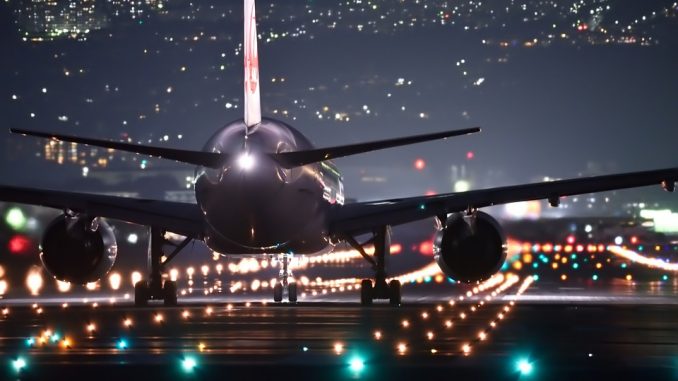
By definition, flying under VFR (visual flight rules) requires that you be able to see things. After the sun goes down, it is obviously more difficult to see the world with the clarity that comes with the big bright light that shines down upon us during the daytime. However, there are advantages that come with flying after the sun goes down.
The first night flying advantage has nothing to do with weather. Then why discuss it on the Flying Weatherman website? Well, it’s all part of flying and it’s one of the main reasons I enjoy flying at night: Nobody else is up there! Compared to traffic during the daylight hours, nighttime operations are practically non-existent. I used to fly out of one of the busiest GA-only airports in the country, where being number 6 or 7 in line for takeoff is not uncommon and where there may be 3 or 4 planes in the pattern at a time for the “touch and go” runway. But to give you an idea of the traffic slowdown after sundown, both ground and tower are combined onto one frequency. Only one controller is necessary to handle the traffic trickle during the late-night hours.
Another night flight advantage does have to do with the weather, but it’s more of a factor during the warmer spring and summer months. When the stronger sun (more hours of daylight and a higher sun angle) at that time of year heats up the air close to the ground, that air can become warmer than its surroundings. When that happens, “bubbles” of air begin rising like invisible hot air balloons. This process is known in weather circles as convection, or the vertical movement of air. Pilots, especially glider pilots know them as thermals. When the sun goes down at night, we lose the heating and the atmosphere tends to settle down. Stable atmospheric conditions are more common at night and that means a smooth ride!
Flying at night is not without its drawbacks. The accident rate is quite a bit higher at night than it is during the day. Make sure you are fully qualified, night current as per the FAA regs and prepared before you take to the nighttime skies. Remember, 3 takeoffs and landings within the preceding 90 days in order to carry passengers and those landings must be to a full stop!

Leave a Reply